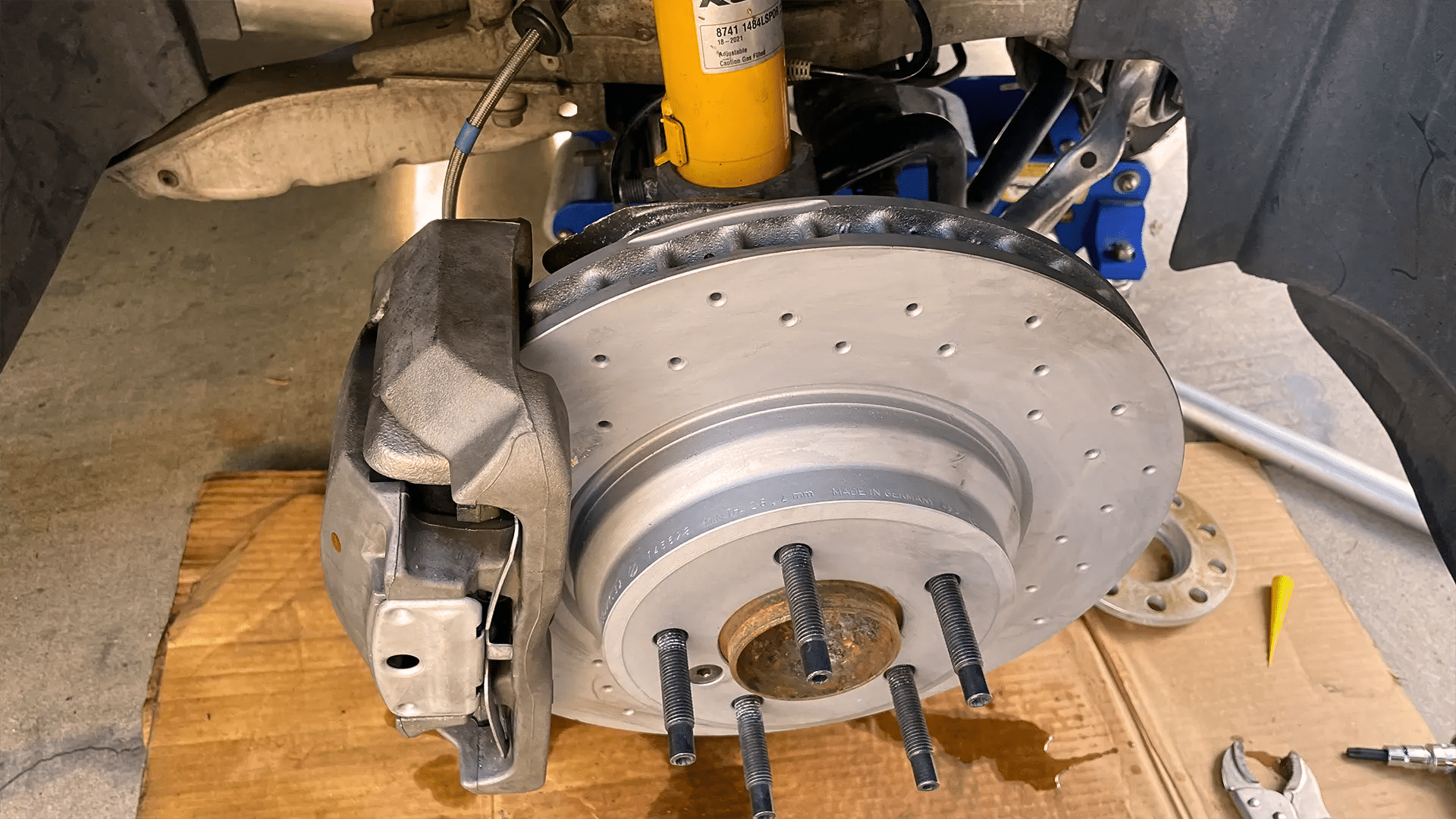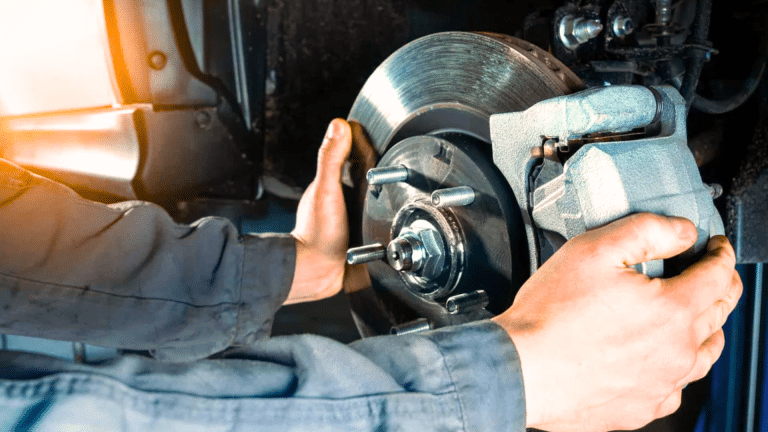Wondering what a fresh set of brake pads will set you back on your BMW? You’re in the right spot. My guide breaks down real prices, explains why they change, and shows simple ways to save without cutting corners.
This is what you’ll find:
- Average costs per model
- Dealer and independent shop comparisons
- Quick money‑saving tips
By the end, you’ll know what a fair price looks like for your BMW series, what questions to ask, and what tools a shop should be using. Last year, my local BMW dealer quoted $480 just for front brake pads.
I called a certified BMW specialist across town and paid only $265 total. That price gap taught me to shop around, and it’s the reason every tip below exists.
Average BMW Brake Pad Replacement Costs
Costs swing with the model, year, and where you take the car. Newer cars and M models sit at the top because of larger brakes and extra sensors.
|
BMW Model |
Front Pads – Dealer |
Front Pads – Independent |
Rear Pads – Dealer |
Rear Pads – Independent |
All Pads – Dealer |
All Pads – Independent |
|
3 Series |
$320 |
$280 |
$270 |
$240 |
$590 |
$520 |
|
5 Series |
$370 |
$310 |
$300 |
$260 |
$670 |
$570 |
|
X5 |
$520 |
$450 |
$460 |
$400 |
$980 |
$850 |
|
M3 / M4 |
$750 |
$650 |
$630 |
$560 |
$1,380 |
$1,210 |
What About Rotors?
Most BMW brake jobs ultimately include rotor replacement. Rotors double the bill because you’re buying four big steel discs and doubling labor time.
- Pads only (all wheels): ~$800 at a dealer, $600 at a trusted indie.
- Pads + rotors (all wheels): ~$1,600 at a dealer, $1,200 at an indie.
- Front pads + rotors, rear pads only: ~$1,200 dealer, $950 indie.
Quick tip: Some shops can resurface rotors once for about $20 each if they’re still thick enough. That keeps money in your pocket, but it’s off the table once rotors drop below BMW’s minimum spec.
Why Are BMW Brake Jobs More Expensive?

I know the price tag can shock you. Let me walk you through the big reasons so you see where the money goes and decide what matters to you.
1. Higher‑Grade Parts
BMW pads are not the cheap organic kind you find on budget cars. They’re semi‑metallic or ceramic.
That makes them quieter, stronger, and able to handle heat, but it also bumps up the cost. M cars even use two‑piece or drilled rotors that add more dollars.
2. Electronic Wear Sensors
Every pad set comes with a tiny sensor. When the pad gets thin, the sensor trips your dashboard light.
Once that happens, you have to swap the sensor along with the pads. It’s only about $25–$50 each, yet it’s an extra line on your invoice that many people miss.
3. Labor Intensity
BMW brakes fit tightly. Techs need to calibrate the electric parking brake, reset the service light, and torque everything to spec. All that takes more time, so labor hours climb compared with a basic sedan.
4. Dealer Labor Rates
If you choose a BMW dealer, expect rates around $150–$200 an hour. An independent BMW shop might charge closer to $100. Those dollars add up fast, so where you go matters.
5. Brand Premium
Part of the bill is simply the BMW badge. OEM parts come through BMW’s supply chain with a markup. Owners on forums call it the “BMW tax.”
I get it, it can feel rough, but the parts do meet strict factory standards.
Still, if you’re out of warranty and mostly drive on the street, you can save money by choosing a trusted aftermarket pad that fits BMW specs.
OEM vs Aftermarket Brake Pads
I get it, you want safe brakes and a price that feels fair. Let me break down the choices so you can pick what fits your wallet and driving style.
|
Factor |
OEM (BMW-Branded) |
Quality Aftermarket |
|
Typical Front Pad Price (5 Series) |
$250 |
$150 (e.g., Akebono Ceramic) |
|
Rotor Price (per wheel) |
$180–$220 |
$120–$160 (Brembo, Zimmerman) |
|
Noise & Dust |
Quieter, low-dust |
Varies, some low-dust ceramics, others louder |
|
Pad Life |
Often longer (built to BMW spec) |
Can match OEM or wear faster, brand matters |
|
Warranty Impact |
Keeps factory warranty/lease return simple |
May void coverage on brakes if under the BMW plan |
|
Labor Cost |
Same as aftermarket, parts choice doesn’t change labor hours |
Same labor cost |
Signs Your BMW’s Brakes Need Attention
I watch for a few clear signals before brakes turn from a small fix into a big bill. If you spot any of these, book a check‑up right away.
- Squealing or Screeching Noise: That high‑pitched squeal comes from a built‑in wear tab on the pad. It’s telling you the pad is nearly gone. Pads first; rotors usually still fine.
- Grinding Sound: Hear metal on metal? The pad is already worn through, and the backing plate is biting the rotor. Now you’re into pads and rotors, and a bigger bill.
- Brake Pedal Vibration: A shaky pedal under light braking points to warped rotors. The pads hit uneven metal, so you feel it in your foot.
- Longer Stopping Distance or Spongy Pedal: If you have to press farther to stop, the pads may be thin, or fluid may have moisture. Check both before driving more.
- Dashboard Brake Warning Light: BMW fits a wear sensor on the pad and a level sensor in the brake fluid reservoir. Light on means one of them tripped. Don’t ignore it.
- Pad Thickness Under 3 mm: Look through the wheel spokes. If the pad lining looks thinner than a nickel, about 3 mm, it’s time for new pads.
How Long Do BMW Brake Pads Last?
Most BMW brake pads last somewhere between 30,000 and 70,000 miles. That’s a big spread, so let me show you what pushes your pads to the low end, or lets them stretch to the high end.
- Driving Habits: Sprint from light to light in city traffic or hammer the brakes for every corner, and you’ll see pad life tumble toward 20k–30k miles.
- Pad Material: BMW’s softer performance pads bite hard and stop quickly, but they wear faster. Swap to a ceramic aftermarket pad and you’ll likely gain extra miles, though it might feel a touch less grabby.
- Vehicle Weight and Model: An X5 or X7 hauls more mass than a 3 Series, so its brakes work harder every stop. M cars also chew pads faster thanks to spirited driving and larger rotors.
- Transmission and Engine Braking: If you downshift a manual or use paddle‑shifters to slow the car, the engine takes some stress off the brakes. Automatics that coast and then brake do the opposite.
Tips to Save Money on BMW Brake Replacement
I’ve been helping friends and readers save money on brake jobs for years. These are some simple tips that you can start using today.
1. Compare Quotes
Call the dealer first, then phone two local BMW‑focused shops. Ask each for an itemized estimate, not just a lump sum.
You’ll see parts, labor hours, and shop fees side by side. Forum users report $300–$500 swings on the same job just from shopping around.
If one quote looks thin on details, press for clarity; hidden add‑ons often sit in the fine print.
2. Brake Specials and Coupons
Dealers run seasonal brake events, think spring road‑trip checks or winter safety promos.
Indie shops fight back with online coupons and price‑match promises. Before booking, Google your shop’s name plus “coupon” or “promo code.”
Flash that ad at the counter and ask if they can meet or beat it. Most will shave at least 10 % to keep your business.
3. Aftermarket Parts
Once your BMW is out of warranty, parts choice is wide open. Top brands like Akebono, Brembo, EBC, and Zimmerman meet or exceed OEM specs while costing 20–40 % less.
Ceramic pads run cleaner and last longer; performance pads stop harder for track days. Just confirm the exact part number for your chassis and keep receipts in case you ever sell the car.
4. DIY For Minor Tasks
Swapping pads takes basic tools: jack stands, a 14 mm socket, a torque wrench, and a calm hour. YouTube has step‑by‑step guides for most BMW models.
Do the work slowly, follow torque specs, and reset the pad sensor with a cheap OBD scanner.
If you’re nervous, you can still save by buying parts online and paying a shop for labor only, be sure they allow customer‑supplied parts.
5. Check Warranty or Plan Bought
BMW Care+ or extended maintenance? Pads and rotors might already be prepaid.
Log in to your MyBMW account or call the service desk to confirm coverage and mileage caps. Using the plan keeps your warranty intact and builds a clean service record, which helps resale value later.
6. Resurface Rotors (If Applicable)
Rotors don’t always need replacement. Ask the tech to measure rotor thickness. If it’s above BMW’s minimum, a quick machining pass costs about $20 per rotor and removes minor grooves.
That single step can save $250+ on parts. Note: warped or deeply cracked rotors still require replacement; safety first.
Conclusion
Now you’ve got a clear idea of what it costs to replace BMW brake pads. I know it’s not a small expense, but understanding the numbers helps you make smarter choices.
Depending on your model, the shop you pick, and whether you go with OEM or aftermarket parts, you could spend anywhere from $250 to over $1,000.
I suggest getting quotes from more than one shop, looking out for brake specials, and checking your warranty or maintenance plan.
Also, don’t wait too long; replacing pads early can help you avoid the bigger cost of new rotors.
I hope this breakdown helps you plan ahead and feel confident about your next service. If you’ve got questions or tips from your own experience, I’d love to hear them.








